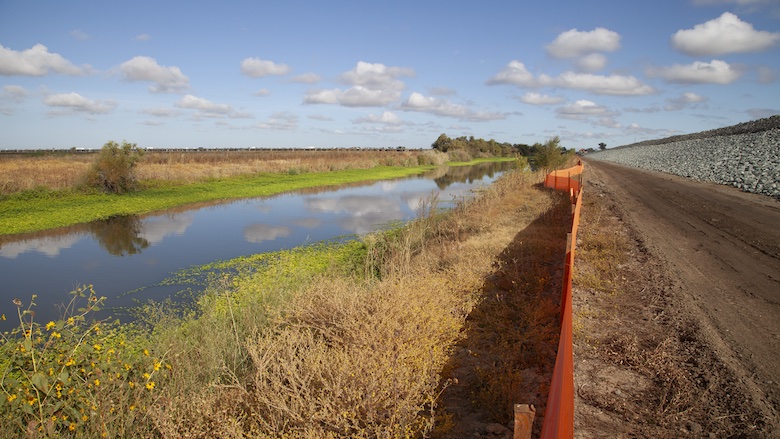Water Resources
Corps, FEMA Issue Draft Guidelines on Levee Safety

Floods put about 25 million properties nationwide at risk, guidelines say.
Photo by Ken Wright, U.S. Army
The U.S. Army Corps of Engineers–in a joint effort with the Federal Emergency Management Agency–has issued draft guidelines aimed at improving the safety of levees around the country. The Corps is seeking comments by July 31.
The draft document, which the Corps opened to public comment on April 1, says that “a better understanding of the risks to flooding along streams, rivers, lakes and coastlines must be gained and a national approach is needed.”
“With thousands of communities across the country depending on levees to reduce impacts from flooding, this is a significant milestone,” said Tammy Conforti, the Corps’ lead official for the National Levee Safety Program.
“There has been a long-standing need to have a common reference to connect all the important practices related to levees,” Conforti said in a statement.
“The guidelines provide a common framework to improve public awareness and serve as a basis for continuous practices well into the future.”
The American Society of Civil Engineers is "excited" to see the draft guidelines, says Marsia Geldert-Murphey, ASCE's president. "These guidelines provide a clear set of best practices to enhance safety and improve the performance of the nation's levees while providing the flexibility necessary for different communities and levee systems," she said in an email to ENR,
Echoing Biden administration priorities, the Corps said, “Considerations for climate change impacts on levees, integrating natural and nature-based features and needs of underserved communities are woven throughout the document.”
Guidelines Lay Out Principles
The draft guidelines have several main principles: creating a national approach; improving the awareness and understanding of flood risk; having timely and relevant data; and integrating roles and responsibilities.
The 876-page document includes chapters on managing flood risk, understanding levee fundamentals, engaging communities, estimating levee risk, managing levee risk, formulating a levee project, designing a levee, constructing a levee, managing levee emergencies, reconnecting the floodplain and enhancing community resilience.
The document notes that much of the existing levee infrastructure “is decades old and was built without the benefit of modern engineering practices.”
It adds that levees are designed, built and managed by a variety of types of agencies and organizations, which use different processes and standards.
The draft guidelines also note that about 25 million properties are at risk from flooding and more than five million structures are located behind levees or other types of flood-risk mitigation infrastructure.
Heavy Damage From Floods
From 1980 to 2021 there were 36 flooding events in the U.S. Each had estimated direct losses of $1 billion or more, according to a report from Adam B. Smith, an applied climatologist at the National Oceanic and Atmospheric Administration's National Center for Environmental Administration. Taken together, the flood events' direct losses were $168.4 billion.
The agencies also made available for review a companion document dealing with vegetation management practices. The agencies said feedback over the last two years on the scope of the guidelines indicated a need for such practices.
The Corps and FEMA jointly are in charge of the levee safety program, which Congress established in the 2007 Water Resources Development Act.



